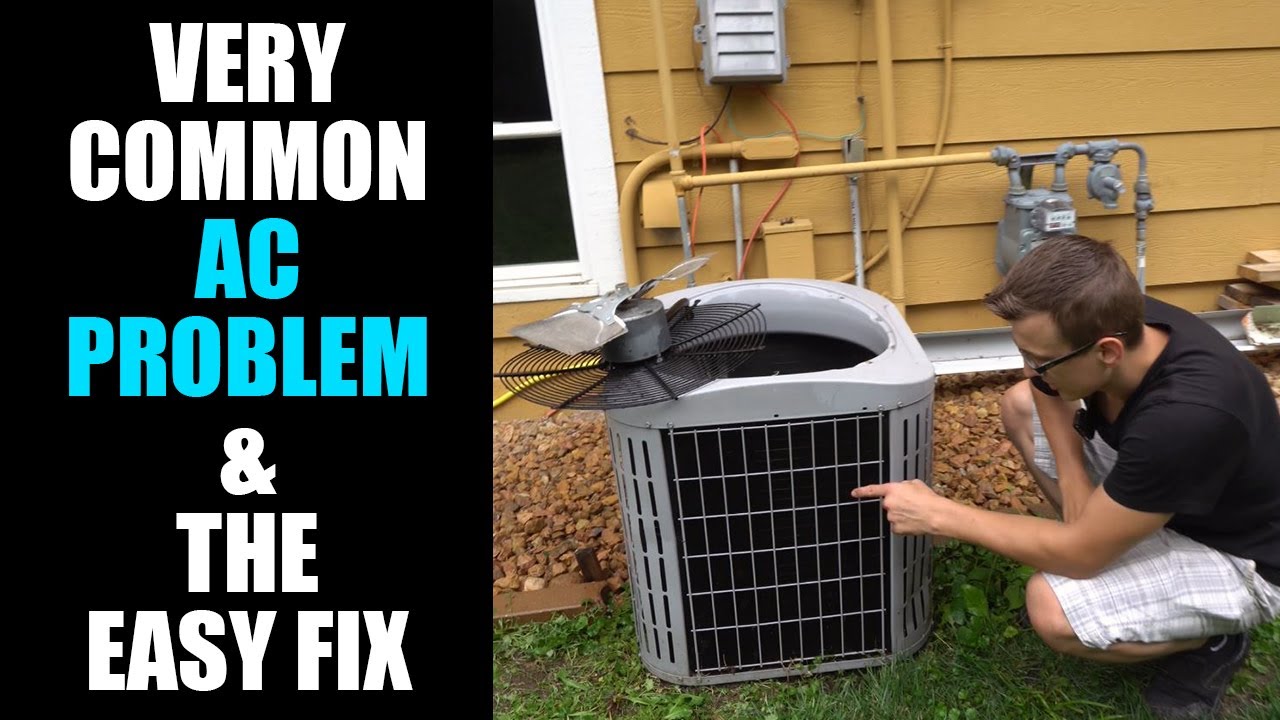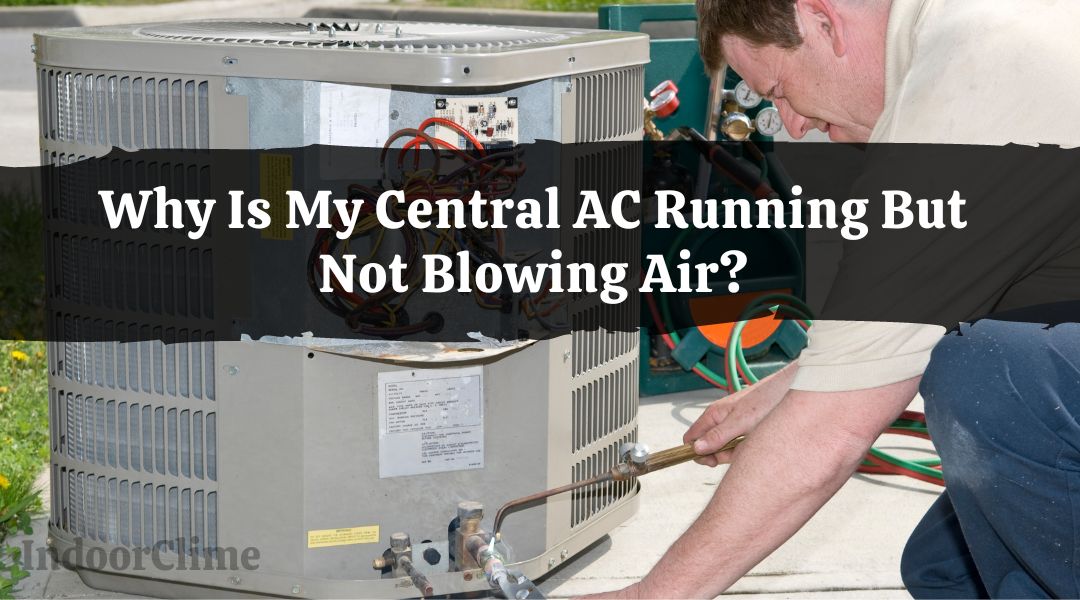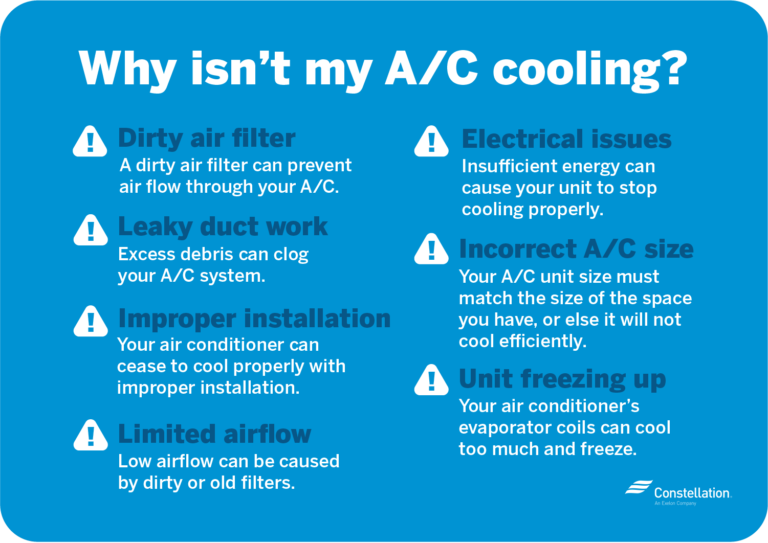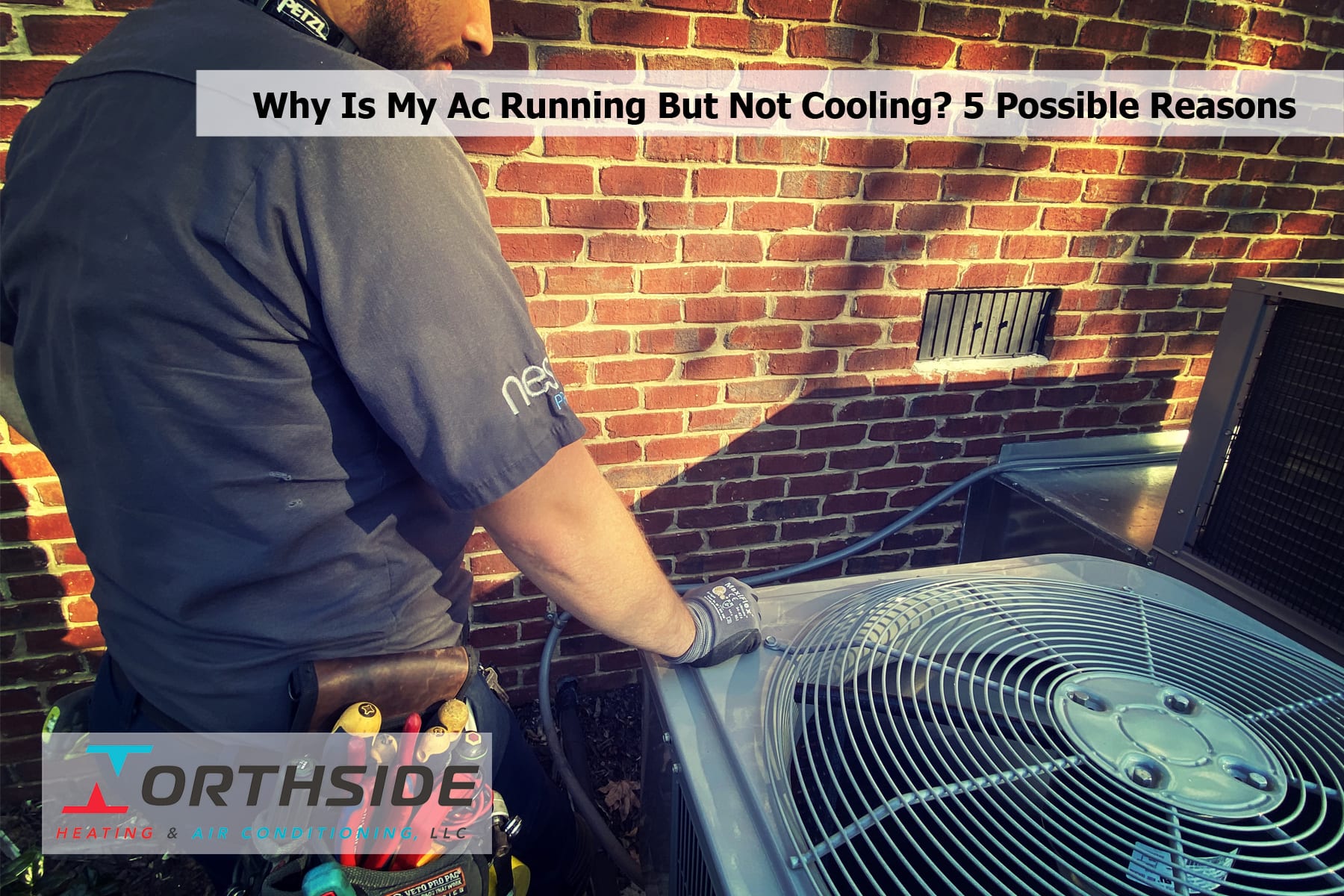Central Air Unit Running But Not Cooling

It's frustrating when your central air conditioning unit is running, humming along, but failing to cool your home. You're paying for the electricity, hearing the noise, but not feeling the relief from the heat. This situation is a common one, and fortunately, many of the potential causes are relatively easy to diagnose and sometimes even fix yourself. This guide will walk you through the most likely reasons why your AC isn't cooling, helping you understand the problem and determine the best course of action.
Understanding the Basics of Central Air Conditioning
Before diving into troubleshooting, let's review how a central AC system works. This understanding will make it easier to pinpoint the source of the problem.
A central air conditioner has two main components: the outdoor unit (condenser) and the indoor unit (evaporator coil). The refrigerant, a special chemical, circulates between these two units. Think of refrigerant as the "blood" of your AC system, carrying heat from inside to outside.
Here's a simplified breakdown of the cooling process:
- Indoor Unit (Evaporator Coil): Warm air from your home is blown across the cold evaporator coil. The refrigerant inside the coil absorbs the heat, cooling the air which is then circulated back into your home through the vents. The refrigerant, now warmed, flows to the outdoor unit.
- Outdoor Unit (Condenser): The refrigerant releases the absorbed heat to the outside air through the condenser coil. A fan helps dissipate this heat. The refrigerant, now cooled, flows back to the indoor unit to repeat the cycle.
If any part of this system isn't working correctly, the cooling process will be compromised.
Common Reasons Your AC Isn't Cooling
Now, let's explore the most frequent culprits behind a failing AC system:
1. Thermostat Problems
The thermostat is the brain of your AC system. If it's malfunctioning or set incorrectly, it can prevent the unit from cooling properly.
- Incorrect Setting: Make sure the thermostat is set to "Cool" and the desired temperature is lower than the current room temperature. A simple oversight can cause the issue.
- Fan Setting: If the fan is set to "On" instead of "Auto," the blower will run constantly, even when the AC isn't actively cooling. This can make it seem like the AC isn't working. Setting the fan to "Auto" ensures it only runs when the AC is cooling.
- Faulty Thermostat: A malfunctioning thermostat may not be accurately reading the temperature or sending the correct signals to the AC unit. You can test this by turning the thermostat to the lowest possible setting. If the AC doesn't kick on, the thermostat might be the problem. Consider replacing it, especially if it's old.
- Battery Issues (for digital thermostats): Low batteries can cause erratic behavior. Replace them with fresh batteries.
2. Dirty Air Filter
A clogged air filter is one of the most common reasons for AC problems. It restricts airflow, making the AC unit work harder and less efficiently.
- Reduced Airflow: A dirty filter restricts the amount of air flowing over the evaporator coil. This can cause the coil to freeze up, further hindering cooling.
- Overheating: The AC unit has to work harder to push air through the clogged filter, potentially leading to overheating and damage to components like the compressor.
- Solution: Replace the air filter regularly, typically every 1-3 months, depending on usage and air quality. Check it monthly and replace it when it appears dirty. This is a simple and inexpensive maintenance task that can significantly improve AC performance.
3. Frozen Evaporator Coil
As mentioned earlier, a frozen evaporator coil can severely restrict cooling. This usually happens due to reduced airflow or low refrigerant.
- Causes: The most common causes are a dirty air filter restricting airflow and low refrigerant levels. Less frequently, a faulty blower motor can also lead to coil freezing.
- Symptoms: You might see ice forming on the refrigerant lines near the indoor unit or feel little to no airflow coming from the vents.
- Solution: First, turn off the AC and set the fan to "On" to allow the ice to melt. This can take several hours. Once the ice is melted, replace the air filter. If the coil freezes again after restarting the AC, you likely have a refrigerant leak and will need to call a professional.
4. Dirty Condenser Coil
The condenser coil, located in the outdoor unit, releases heat from the refrigerant. If it's covered in dirt, debris, or vegetation, it can't effectively dissipate heat.
- Reduced Heat Transfer: A dirty condenser coil reduces the AC unit's ability to release heat, causing it to work harder and less efficiently.
- Overheating: Similar to a dirty air filter, a dirty condenser coil can lead to overheating and potential damage to the compressor.
- Solution: Clean the condenser coil regularly. Turn off the power to the unit at the breaker box. Use a garden hose with a gentle spray nozzle to rinse away dirt and debris. Be careful not to bend the fins on the coil. You can also use a fin comb to straighten any bent fins.
5. Refrigerant Leaks
Refrigerant is essential for the cooling process. If there's a leak, the system won't have enough refrigerant to effectively absorb and transfer heat.
- Reduced Cooling Capacity: Low refrigerant levels significantly reduce the AC unit's cooling capacity.
- Signs of a Leak: You might notice ice forming on the refrigerant lines, hear a hissing sound near the AC unit, or experience a gradual decline in cooling performance.
- Professional Help Required: Refrigerant leaks require professional diagnosis and repair. A certified HVAC technician can locate and repair the leak, and recharge the system with the correct amount of refrigerant. Do not attempt to handle refrigerant yourself, as it is a regulated substance and requires special equipment and training.
6. Ductwork Issues
Leaky or poorly insulated ductwork can lose significant amounts of cool air before it reaches the vents.
- Air Loss: Leaky ducts allow cool air to escape into unconditioned spaces like attics or crawl spaces.
- Insulation Problems: Poorly insulated ducts can gain heat from the surrounding environment, reducing the cooling efficiency.
- Solution: Inspect the ductwork for visible leaks or damage. Seal any leaks with duct tape or mastic sealant. Consider insulating the ducts, especially in unconditioned spaces. If the ductwork is old or significantly damaged, it may need to be replaced. A professional HVAC technician can assess your ductwork and recommend the best course of action.
7. Blower Motor Problems
The blower motor is responsible for circulating air over the evaporator coil and throughout your home. If it's not working properly, airflow will be reduced, hindering cooling.
- Reduced Airflow: A failing blower motor can significantly reduce airflow, leading to poor cooling.
- Signs of a Problem: You might notice weak airflow from the vents or hear unusual noises coming from the indoor unit.
- Professional Diagnosis: Diagnosing blower motor problems often requires specialized equipment and knowledge. It's best to call a qualified HVAC technician to inspect the motor and determine if it needs to be repaired or replaced.
8. Compressor Issues
The compressor is the heart of the AC system, responsible for compressing the refrigerant. If it fails, the AC unit won't be able to cool at all.
- No Cooling: A faulty compressor will prevent the refrigerant from circulating properly, resulting in no cooling.
- Signs of a Problem: You might hear unusual noises coming from the outdoor unit or notice that the AC unit is running but not cooling.
- Expensive Repair: Compressor repairs are often expensive. In some cases, it may be more cost-effective to replace the entire AC unit. A professional HVAC technician can diagnose the compressor and provide you with repair or replacement options.
9. Electrical Problems
Electrical issues, such as a tripped breaker or a faulty capacitor, can also prevent the AC unit from cooling.
- Tripped Breaker: Check the breaker box for a tripped breaker. Reset it if necessary. If the breaker trips repeatedly, there may be an underlying electrical problem that needs to be addressed.
- Faulty Capacitor: Capacitors help start and run the AC unit's motors. A failing capacitor can prevent the motors from starting or running properly.
- Safety First: Working with electricity can be dangerous. If you're not comfortable working with electrical components, it's best to call a qualified electrician or HVAC technician.
Troubleshooting Steps: A Systematic Approach
When your AC isn't cooling, follow these steps to diagnose the problem:
- Check the Thermostat: Ensure it's set to "Cool" and the temperature is lower than the current room temperature. Verify the fan setting is on "Auto."
- Inspect the Air Filter: Replace it if it's dirty.
- Check for a Frozen Evaporator Coil: If you suspect a frozen coil, turn off the AC and let it thaw completely.
- Clean the Condenser Coil: Remove any dirt or debris from the outdoor unit.
- Check the Breaker Box: Ensure the breaker for the AC unit hasn't tripped.
- Listen for Unusual Noises: Pay attention to any strange sounds coming from the indoor or outdoor unit.
When to Call a Professional
While some AC problems can be resolved with DIY troubleshooting, others require the expertise of a qualified HVAC technician. Call a professional if:
- You suspect a refrigerant leak.
- The evaporator coil freezes repeatedly after thawing.
- You're experiencing electrical problems.
- You suspect a problem with the compressor or blower motor.
- You're uncomfortable working with electrical or mechanical components.
Preventive Maintenance: Keeping Your AC Running Smoothly
Regular maintenance can help prevent many of the problems discussed above and extend the life of your AC unit.
- Replace Air Filters Regularly: This is the most important maintenance task.
- Clean the Condenser Coil Annually: Rinse away dirt and debris.
- Schedule Professional Tune-Ups: Have a qualified HVAC technician inspect and tune up your AC unit annually. This can help identify and address potential problems before they become major issues.
- Keep the Area Around the Outdoor Unit Clear: Remove any vegetation or debris that could obstruct airflow.
By understanding how your AC system works, following a systematic troubleshooting approach, and performing regular maintenance, you can keep your home cool and comfortable all summer long.










